
Have you ever wondered about the sharp, stabbing discomfort on one side of your hip? If sitting or standing for extended periods worsens this nagging pain, or if it radiates from your hip or pelvic area to your thigh, making your leg feel unstable, you might be experiencing SI joint pain, often linked to SI joint dysfunction.
If so, don’t fret! There is a solution. First, get confirmation from your doctor that you do indeed have sacroiliitis (inflammation of one or both of your sacroiliac joints), and educate yourself further on how your SI joint functions in your body. Once you have that knowledge, you can better understand why this dysfunction might be occurring and what steps you can take to treat this inflammatory disease. One suggestion is to regularly perform exercises designed to reduce inflammation and decrease your pain.
1. Supine Hamstring Stretch
For this exercise, use a yoga strap, belt, or a towel that is long enough to wrap under your foot.
Lie on your back on the floor, maintaining good alignment with your head, shoulders, hips, and legs. Wrap the middle of the strap under the bottom of one foot and lift your leg up upward, keeping your toes pointing toward you. Gently pull on the strap to intensify the stretch. Keep your opposite leg slightly bent or straight, depending on your comfort level. Hold this position for 20 seconds. Lower your leg to the starting position and repeat the movement on the opposite side. Start with 1 set of 1 repetition on each side, holding for 20 seconds.
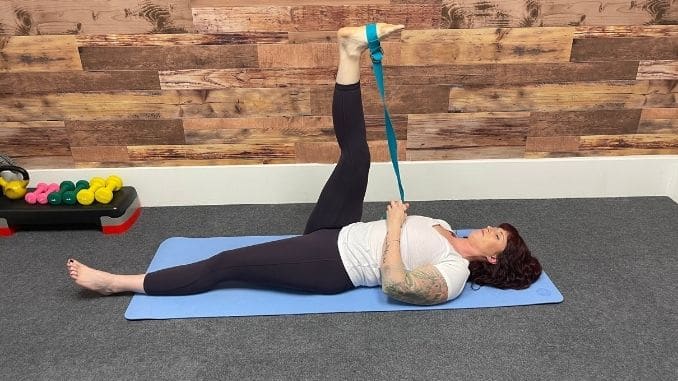
2. Prone Quad Stretch
For this exercise, use a yoga strap, belt, or any inflexible fabric to assist in the movement.
Lie on your stomach with your feet shoulder-width apart, maintaining good alignment with your head, shoulders, hips, and legs. Bend one knee, wrap the middle of the yoga strap around your foot, and gently pull on the strap to intensify the stretch, bringing your heel towards your seat. Hold this position for 20 seconds. Straighten your leg to return to the starting position and repeat the movement on the opposite side. Start with 1 set of 1 repetition on each side, holding for 20 seconds.
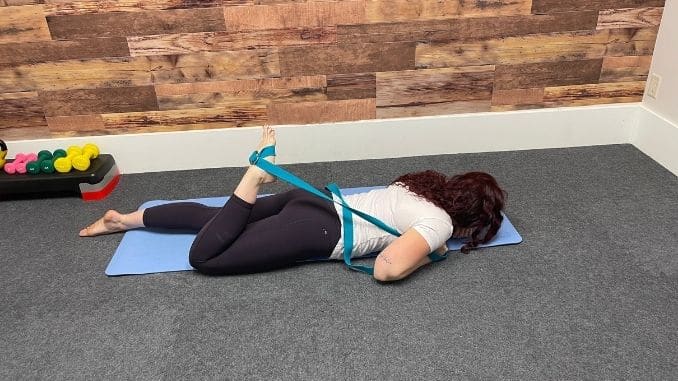
3. Supine Rotations
Lie on your back on the floor with your knees bent and your feet flat on the floor. Place your arms at your sides, relaxing your upper body. Engage your core and rock your knees to one side. Repeat the movement on the opposite side. Start with 1 set of 5 repetitions on each side.
 |
 |
4. Figure 4
Lie on your back with your knees bent and your feet flat on the floor. Cross one ankle over your opposite knee and raise both legs, holding your lower leg with both hands. Pull your knee closer to your chest to intensify the stretch. Hold this position for 10 seconds. Relax and return to the starting position. Repeat the movement on the opposite side. Start with 1 set of 1 repetition on each side, holding for 10 seconds.

5. Banded Knee Abduction
Lie on your back with your knees bent and your feet flat on the floor. Wrap the mini band or resistance tubing around your legs, just above your knees. Engage your core, open your knees, and hold this position for 2 – 3 seconds. Relax to return to the starting position. Start with 1 set of 5 repetitions.
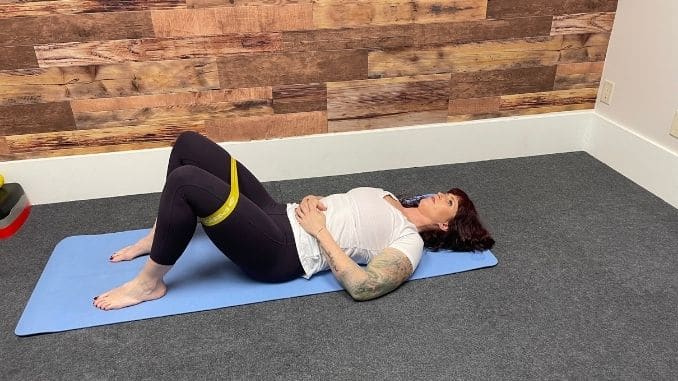 |
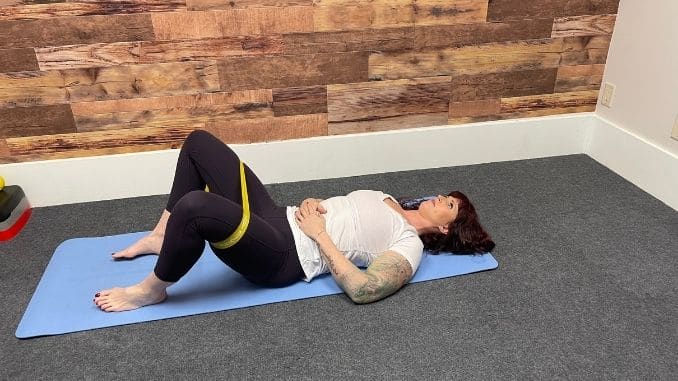 |
6. Ball Squeeze
For this exercise, a Pilates ball works well. If you do not have a Pilates ball, use a pillow or rolled-up towel.
Lie on your back on the floor with your knees bent and your feet flat on the floor. Place the ball between your knees, engage your core and squeeze your knees together. Hold this position for 2 – 3 seconds. Relax and repeat the movement. Start with 1 set of 5 repetitions.
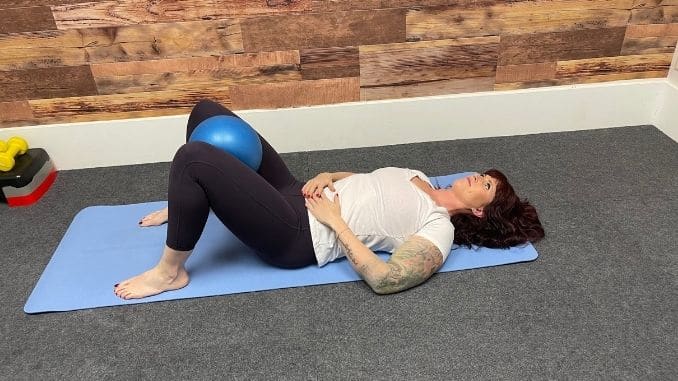
The best way to prevent a sacroiliitis attack from happening is to avoid high-impact activities like jumping, running, and contact sports. Even doing some intensive labor jobs can aggravate your SI joints. Home remedies also include icing and heating the affected area. Icing your low back and pelvic area can reduce inflammation and ease your pain and discomfort. Heating around the joint may help relieve your pain by reducing muscle tension or spasms.
If you’re looking for the best, all natural way to eliminate your SI joint pain, once and for all, look no further. Click here to learn more.

